The Tatyana skirt is almost universal for creating various spring-summer and autumn-winter ensembles. In the summer, the following wardrobe items, mainly tight-fitting, look great with it: multi-colored tops, light turtlenecks, thin T-shirts. In the cooler seasons, the skirt will be advantageously complemented by: a cardigan, a fitted jacket, a bolero, a coat that flares out at the bottom or has an A-silhouette. As for footwear, preference should be given to feminine models of shoes and boots (with low and high heels), ballet flats, ankle boots.
What is this?
A Tatyana skirt is a pleated skirt, similar to the half-sun and sun-flare styles. It is cut from a rectangular piece of fabric that is gathered at the waist with an elastic band, a regular belt or a yoke belt.
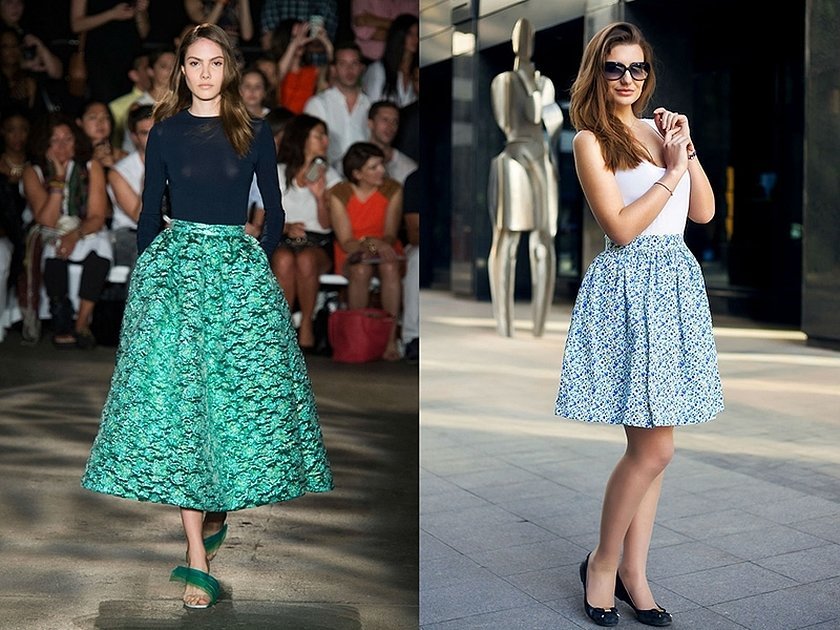
There is an assumption that it got its name "Tatyanka" due to its namesake from the novel "Eugene Onegin". This may well be true, since our great-great-grandmothers wore it with pleasure. Moreover, the style was in demand by both peasant women and noble ladies.
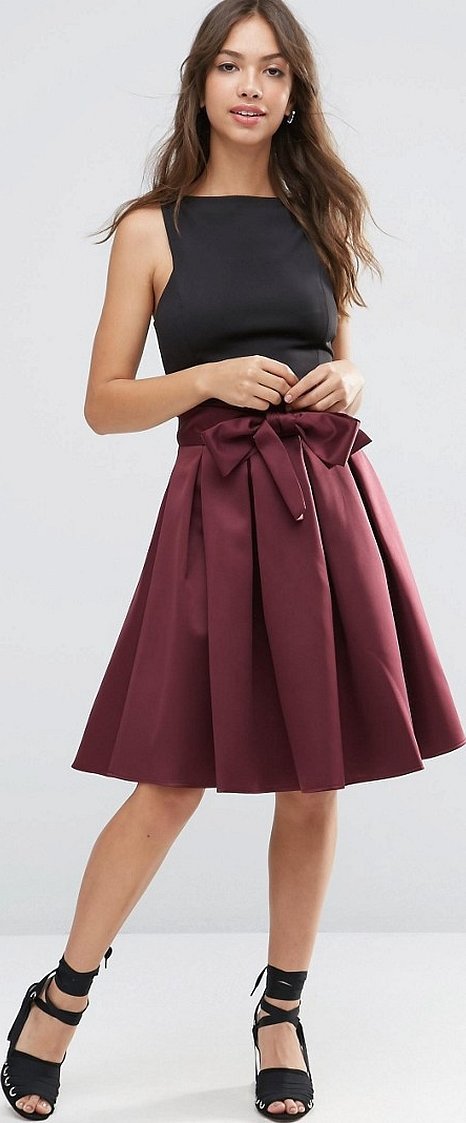
Interesting! The Tatyana skirt is popular among fashionistas of all ages for its femininity and versatility. Beginning dressmakers favor this style for its simplicity and ease of sewing.
Who is it suitable for?
Due to its ability to correct the silhouette, concealing figure flaws, and at the same time distorting proportions, this style is not suitable for everyone.
The best girls to wear a Tatyana skirt are those with narrow hips and a thin waist, that is, those with the "inverted triangle" and "rectangle" body types. This style is simply made for them, as it visually adds volume to the hips and makes angular shapes more feminine. Therefore, such a thing looks good on women, girls, and not yet fully formed girls.
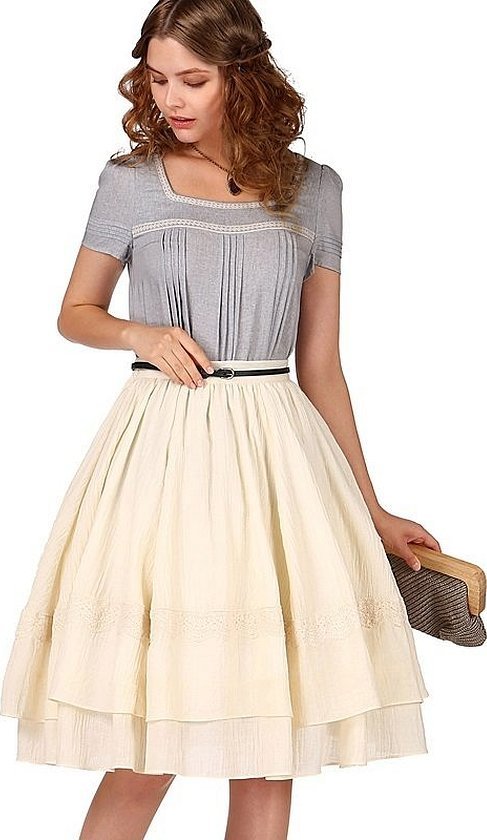
Owners of an hourglass figure should not pass by such a product. In their case, the skirt will emphasize a thin waist, lush chest and perfectly formed hips.
However, a Tatyana skirt is strictly contraindicated for those with a protruding tummy and curvy hips (the "apple" figure type) and for young ladies with small breasts and wide hips (the "triangle" figure type), as it visually makes the lower part of the silhouette heavier.
Which fabric to choose
The fabric for sewing the product can be almost any, from leather and suiting to cotton, mesh and transparent.
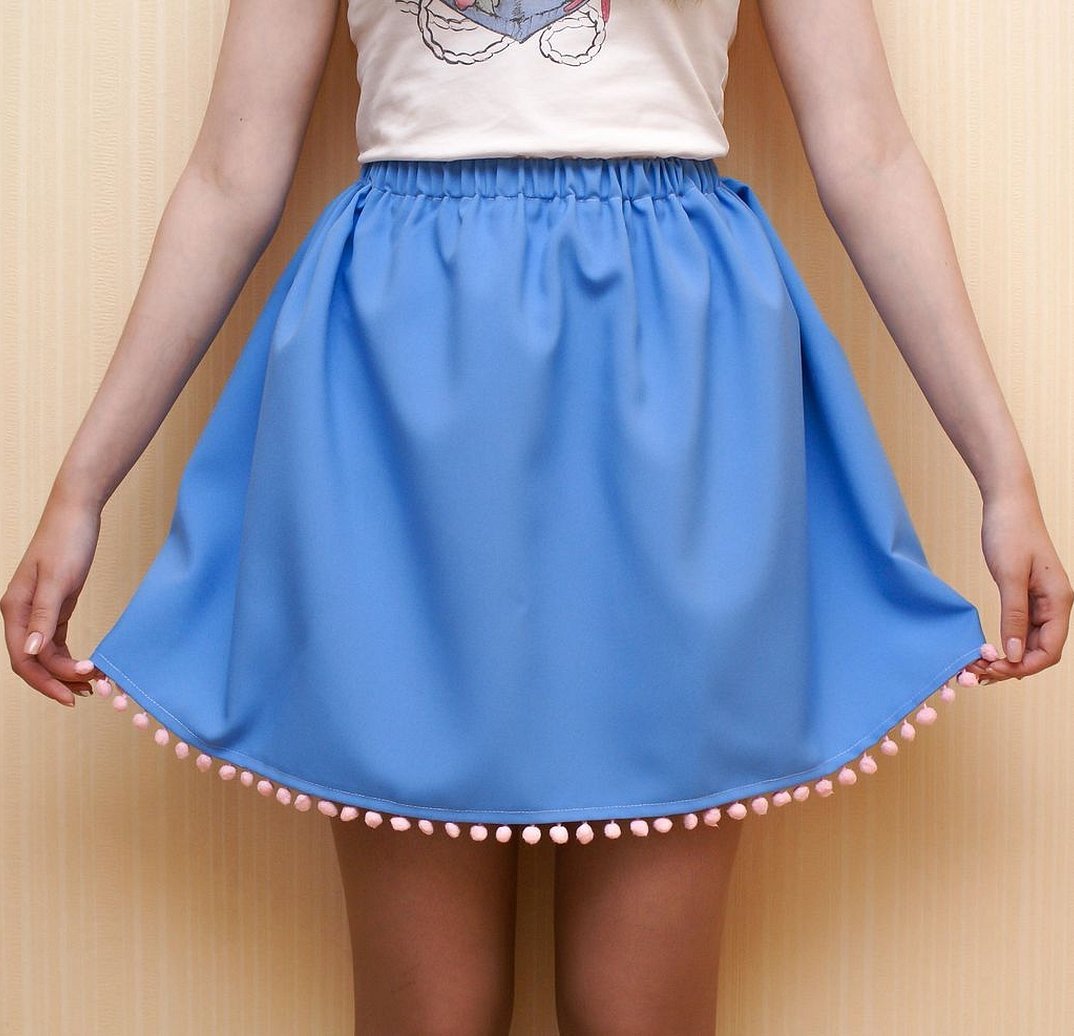
Important! For denser fabrics, due to the complexity of processing, slight gathering is provided in the waist area. For light and flowing fabrics, in addition to gathering, different types of folds are made.
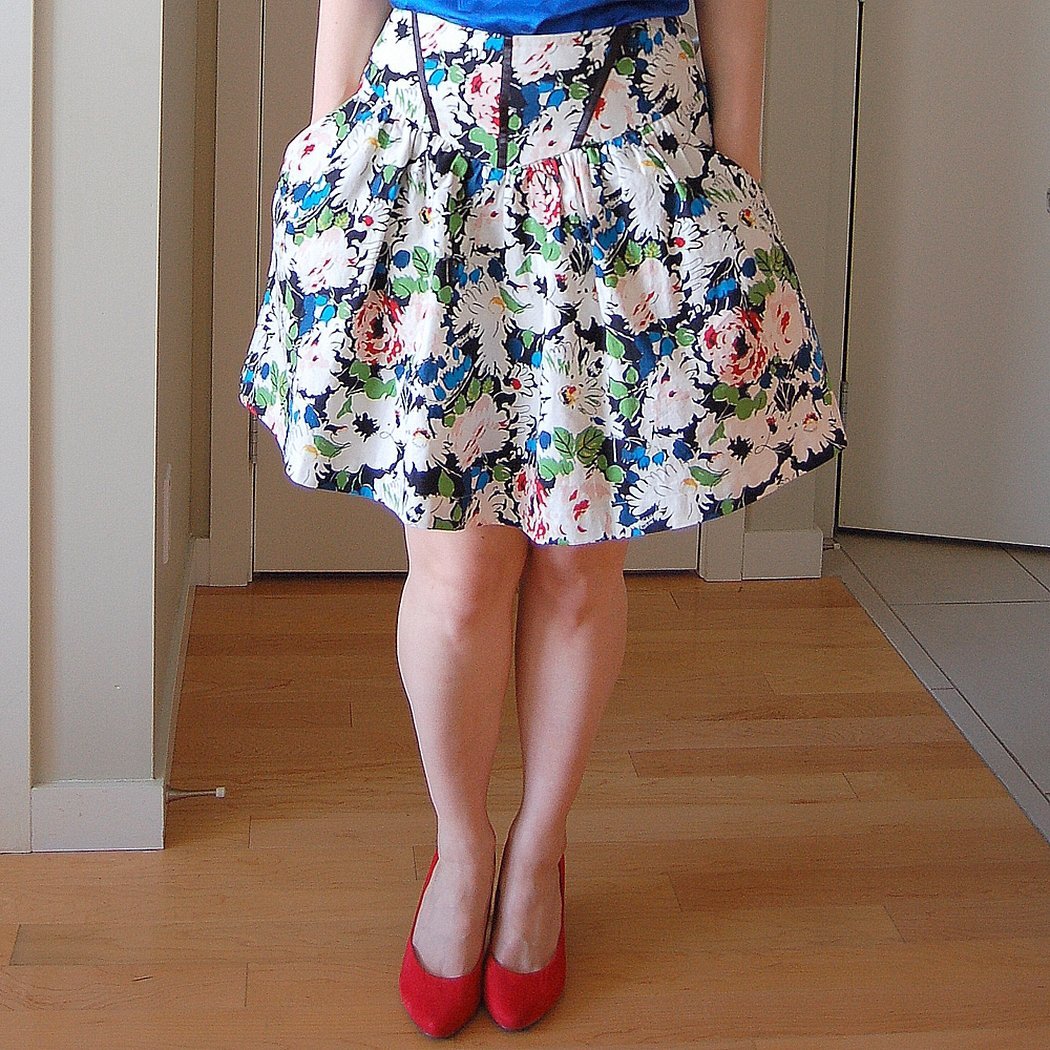
How to calculate consumption
Before you start calculating the required material, you should decide on the skirt model, the length of the product, and also measure the volume of the hips and waist. Let us remind you that Tatyana skirts can be with an elastic band, a belt or a yoke. A yoke is a belt that has a curved shape and repeats the curves of the female body and the cut of the product.
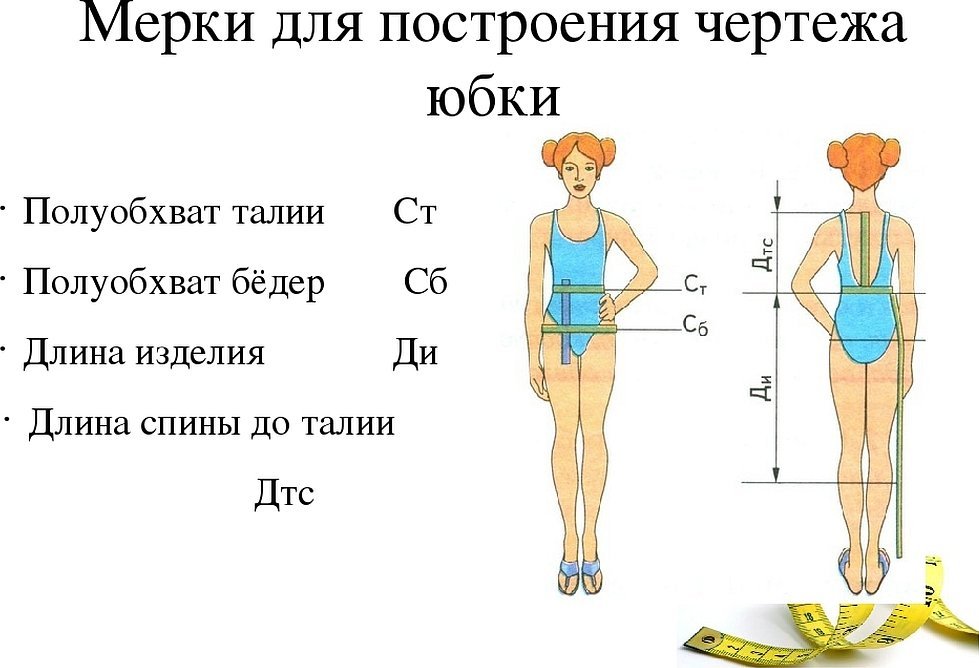
For example: hip circumference (HC) = 95 cm; waist circumference (WC) = 65 cm, and product length (PL) = 70 cm.
If a girl likes lacy outfits and voluminous folds, you need to multiply the required width of the fabric by two. For more conservative models, a correction factor (or assembly factor (AF)) of 1.5-1.6 cm is enough. In general, the product's splendor or AF has a value in the range from 0.3 to 3.5. If the value is less than 0.3, the product will be scanty. And if the material allows, for example, crepe, chintz, viscose, chiffon are used in sewing, then it can be increased beyond the value of 3.5.
- Calculating the amount of fabric for a model with a belt. 95 + 95 * 1.6 = 247 cm. As a rule, the width of the fabric is much less than 1.2-1.45 m, so you will need to take two lengths of the product with allowances for seams and, if the model suggests, for a belt or yoke. So, to calculate the length of the required piece of fabric, an allowance of 1.5-2 cm at the waist and about 10 cm on the back side is added to the length of the product, that is, 70 + 2 + 10 = 82 cm. If a belt is provided, then about 8-10 cm is added, that is, 82 + 10 = 92 cm. To sew a Tatyana skirt 70 cm long and a belt width of 5-8 cm, you will need 92 * 2 = 184 cm of fabric 1.45 m wide.
- Calculating the amount of fabric required for a model with an elastic band (drawstring). There is another way to calculate using the width of the back panel of the skirt. WZPYU = PB (half-girth of the hips) * KS (gathering coefficient). That is, for this example WZPYU = 95/2 * 1.6 = 76 cm. Since the standard width of the fabric is 1.4 m, then 2 lengths of fabric will be required: 70 cm x 2 = 140 cm + 9 cm (allowance for allowances), then 149 cm of fabric will be needed to sew the skirt. Both calculations are given for Tatyana skirts of different models with varying degrees of splendor.
- Calculation of the required amount of fabric for a model with a yoke and pleats (one-sided or box). The volume of a pleated skirt model is usually 2.5 times greater than the numerical value of the hip volume. In our case, this is 95 * 2.5 = 237.5 cm. Also added: the width of the pleats, for example, 2 cm; an allowance for stitching the panels taking into account the print, if any, is 10 cm. That is, with a standard fabric width, 2 to 3 panels may be required. The length of the skirt is calculated as for a model with a belt.
Important! There are the following types of assemblies: fan-shaped (multi-layer), double-sided bow and counter, single-sided.
Pattern and cutting
Paper patterns for the Tatyana skirt, as such, are not required for cutting.
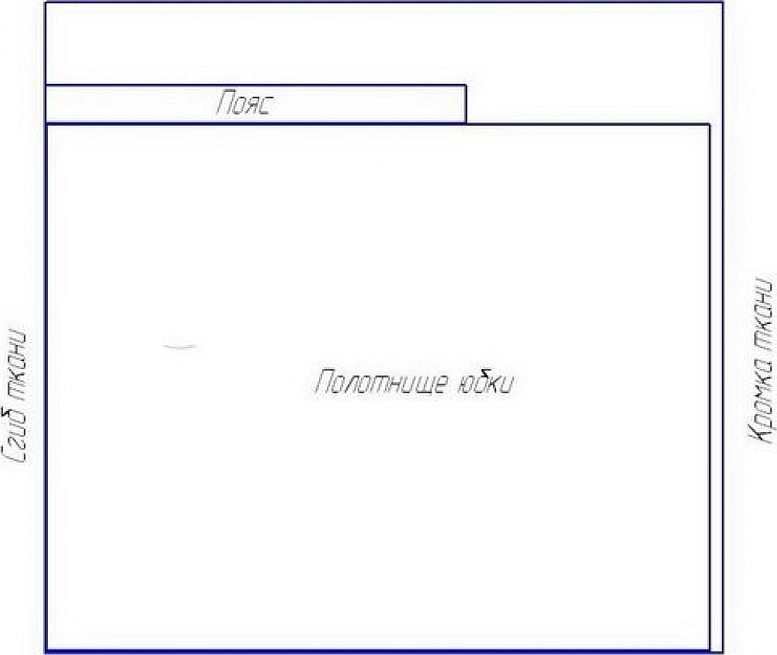
In exceptional cases, they can be used for yokes. So, cutting out a Tatyana skirt for any of the models (except for the item with pleats) will be as follows:
- Fold the material in half.
- From the fold of the fabric, set aside half of the OB*KS=95*1.5=142.5 cm, that is, 71.3 cm.
- At the marked point, a notch is made with scissors.
- Through the obtained point, a straight line parallel to the fold is drawn with chalk, soap or pencil.
- The length of the product is laid down with allowances for stitching (sewing) and hemming.
- Another line is drawn, resulting in the formation of the required rectangle.
- The belt and yoke are cut out with allowances for stitching.
After finishing cutting out the parts, take scissors and carefully cut them out.
Tatyana skirt, how to sew: step-by-step instructions
The sewing technology will change due to the presence of additional parts.
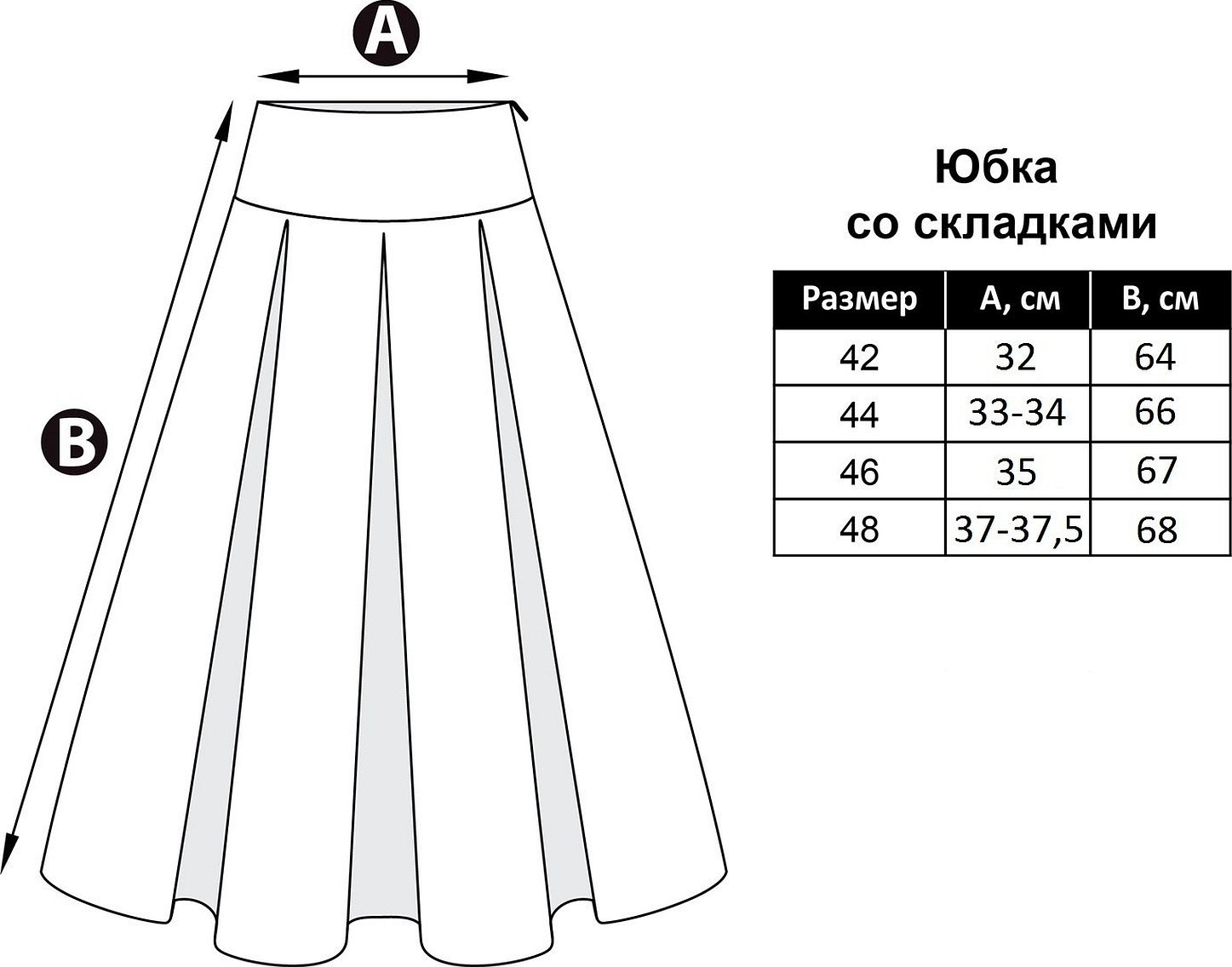
Simple assembly and sewing of the basic model with a belt
To sew a Tatyana skirt, you need to do the following:
- Using an overlock, process the panel (or two) of the product on the sides and bottom.
- Fold the fabric with the right side facing inward and stitch the side from top to bottom, leaving 13-15 cm at the top.
- Gather the fabric at the waist. To do this, set the machine to a stitch length of 4-4.5 mm and stitch, stepping back 1 cm from the top. On one side, secure the seam, and on the other, pull the thread so that the fabric gathers.
- Glue interlining (for thick fabrics) or interlining (for thin fabrics) to the belt or yoke parts so that the product does not stretch. To glue, cut out the belt (or yoke) part and apply it with the rough (sticky) side to the fabric, and iron it several times with a hot iron.
- The belt is applied with the non-glued side to the front side of the fabric and a stitch is made at a distance of 1 cm from the top of the skirt.
- Next, the zipper is sewn on.
- Sew the belt to the product. All gathers and seams are tucked inside, and covered with belt fabric on top and stitched. In this case, the seam should be given on the front side of the product along the line of stitching the product to the belt.
- The hem of the skirt is turned up and stitched.
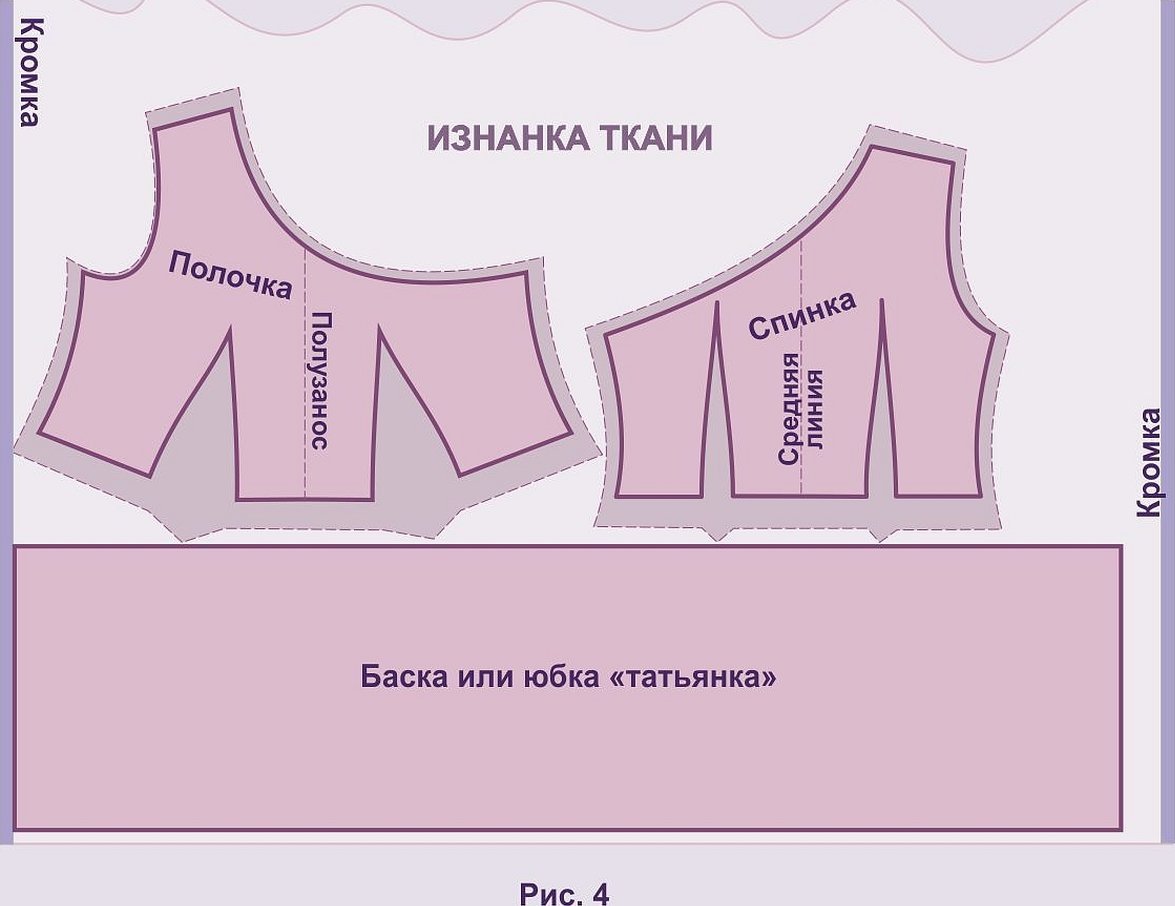
Tatyana skirt with elastic
The previous technology is performed up to and including step 2. And then:
At the top of the skirt fabric, a fold is made 0.5 cm thicker than the existing elastic and stitched from the front side.
Important! When forming the drawstring, the main thing is not to forget to leave holes for threading the elastic inside.
A pin is attached to the elastic and threaded through the drawstring. The pin is then unfastened and the ends of the elastic are joined together and stitched.

Additional information! If there is a wide elastic band (from 3 cm in thickness), the drawstring is not formed until the elastic band is stretched along the entire length of the fabric (at the waist) and stitched at a distance of 7-8 mm from the edge of the product. Next, the upper edge of the product is processed with an overlock. The elastic band is wrapped in the fabric and stitched along the lower edge to the product.
On the yoke
How to sew a skirt with a gathered waist? The sewing technology is identical to that described for the model with a belt, except for the features of forming folds on a Tatyana skirt.
Calculation of a product with assemblies:
- V of the skirt at the hips = Ob + Pb = 95 + 3 = 98 cm;
- Number of pleats on the skirt = 98/5 = (approximately) 20;
- V of the product by the waist: Ot + Pt = 65 + 2 = 67;
- Width of 1 pleat at the waist: 67/20 = 3.4 cm.
Sewing technology of a pleated Tatyana skirt:
- Mark folds on all the pieces of the fabric, alternating the depth of the fold and its width;
- Iron the folds and stitch at a distance of 1 cm from the top of the product along the waist line.
- Next, follow the same procedure as in the technology for creating a model with a belt, starting with step 4.
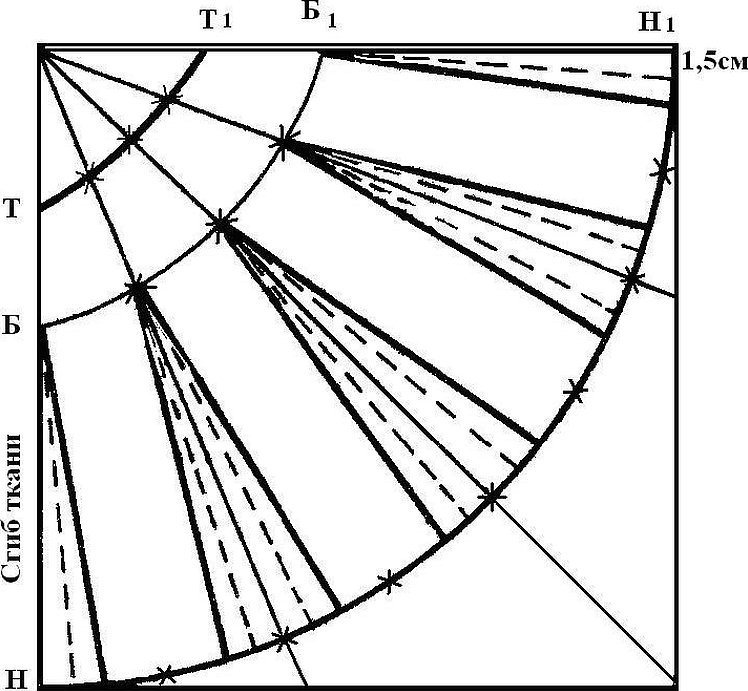
Ironing
Ironing of skirts should be done in the following order:
- Iron pockets, if any.
- Iron the belt.
- Steam the hem of the skirt from the inside out.
- If there are folds, first iron the fold, then place paper underneath it to prevent imprinting on the front side, and then iron the fold itself.
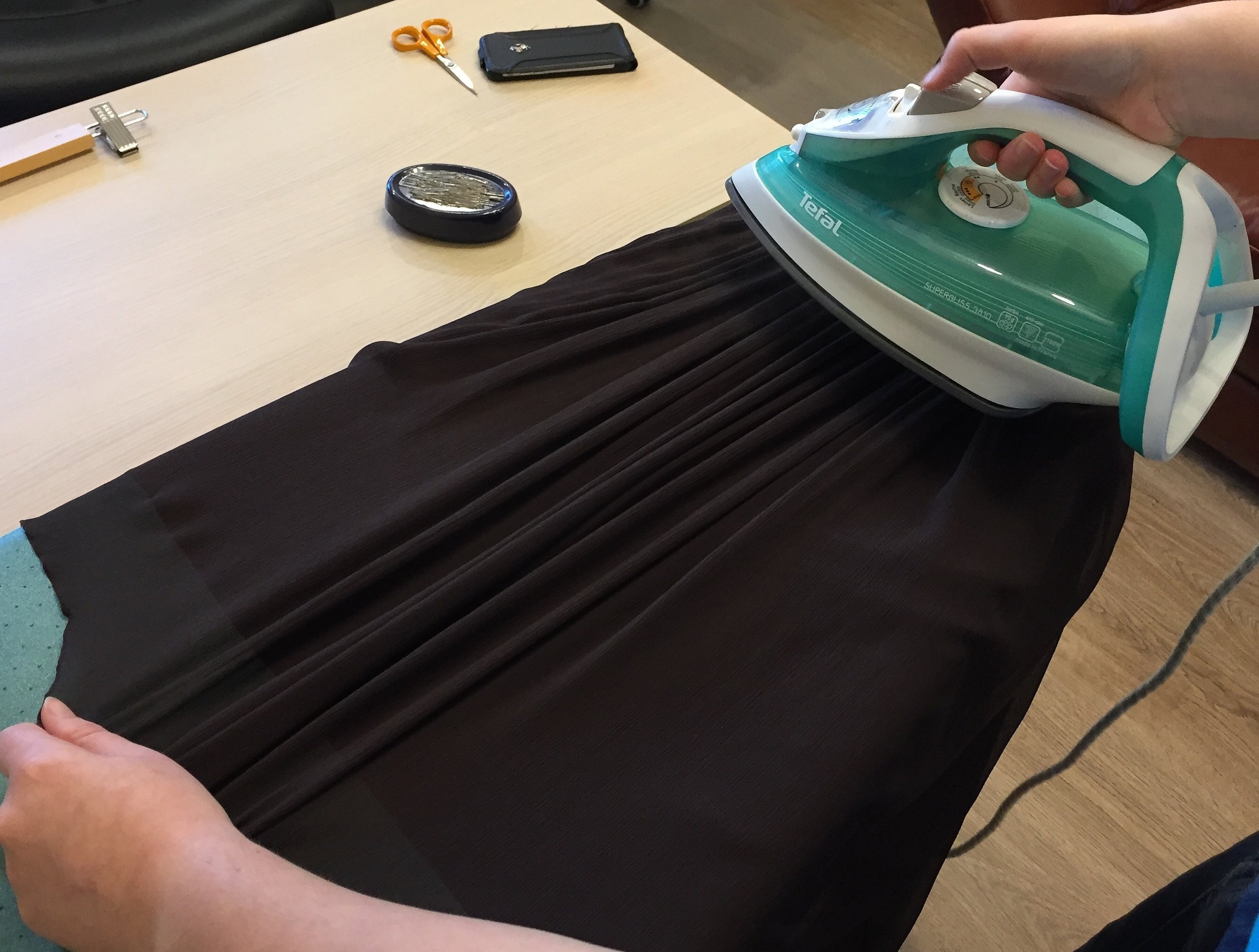
To comply with the technology of ironing finished products, the following items must be available: an adjustable ironing board, an iron with a steam function, and, in the best case, a steam generator unit.
Using the step-by-step instructions presented in this article, even a person who does not know how to sew can make a beautiful Tatyana skirt. The most important thing is to make the pattern correctly and then follow the ironing rules so that the product looks beautiful.




